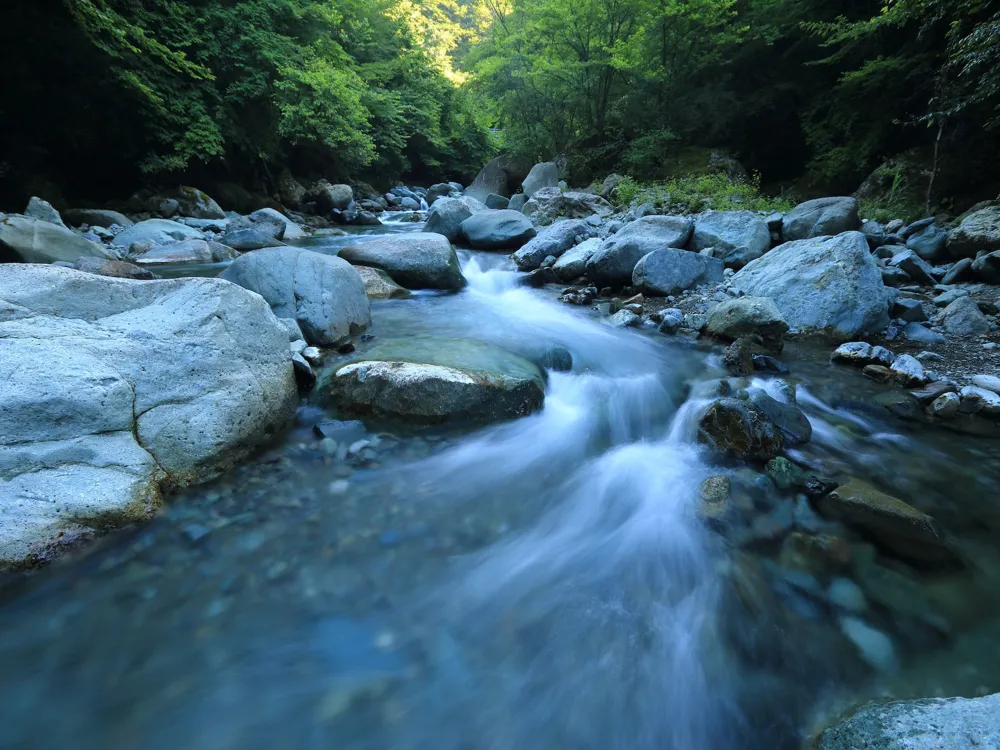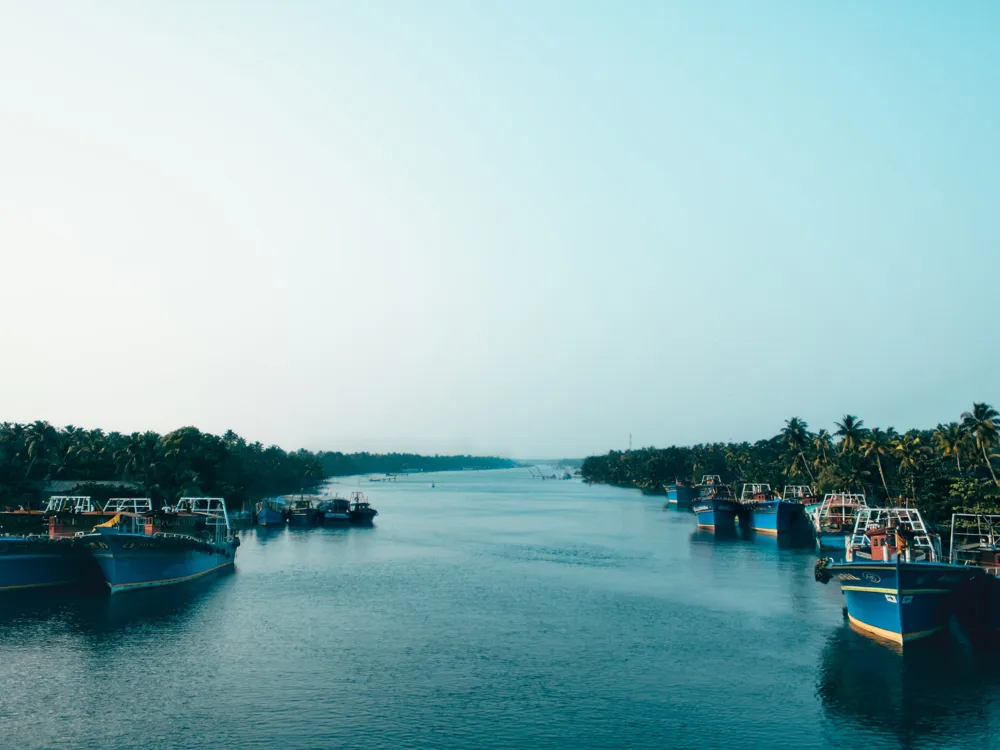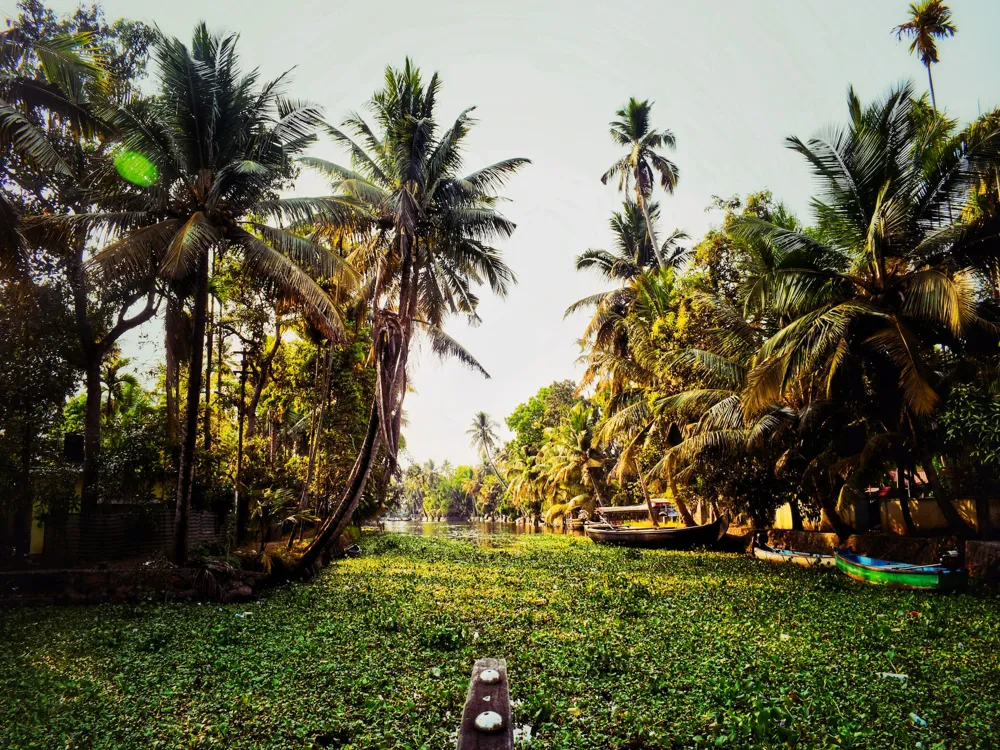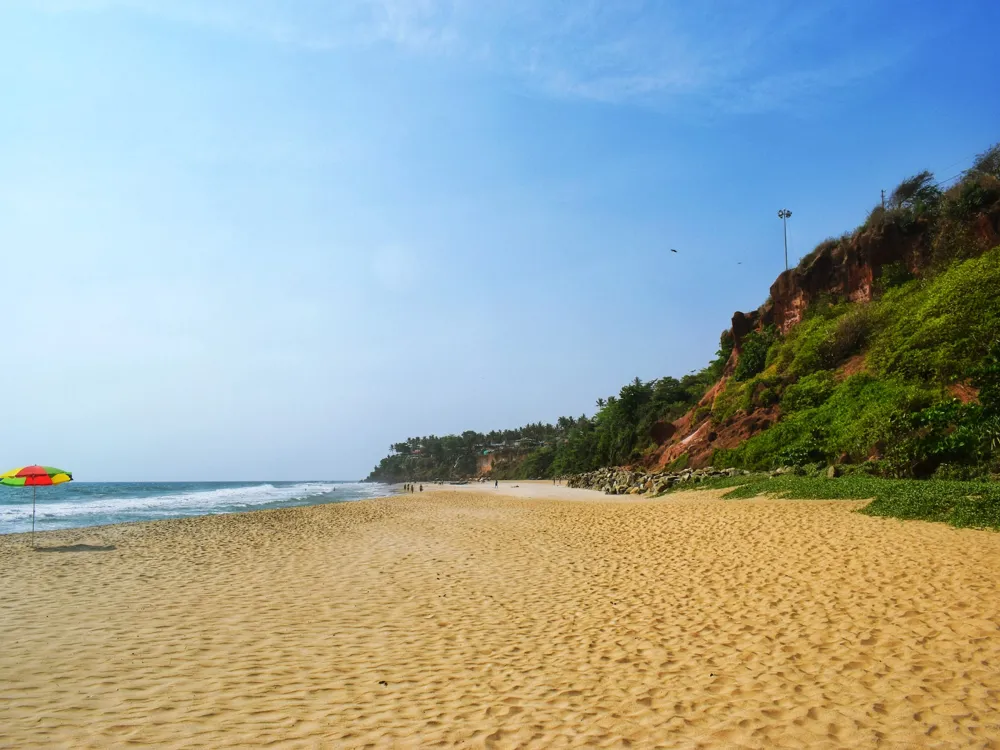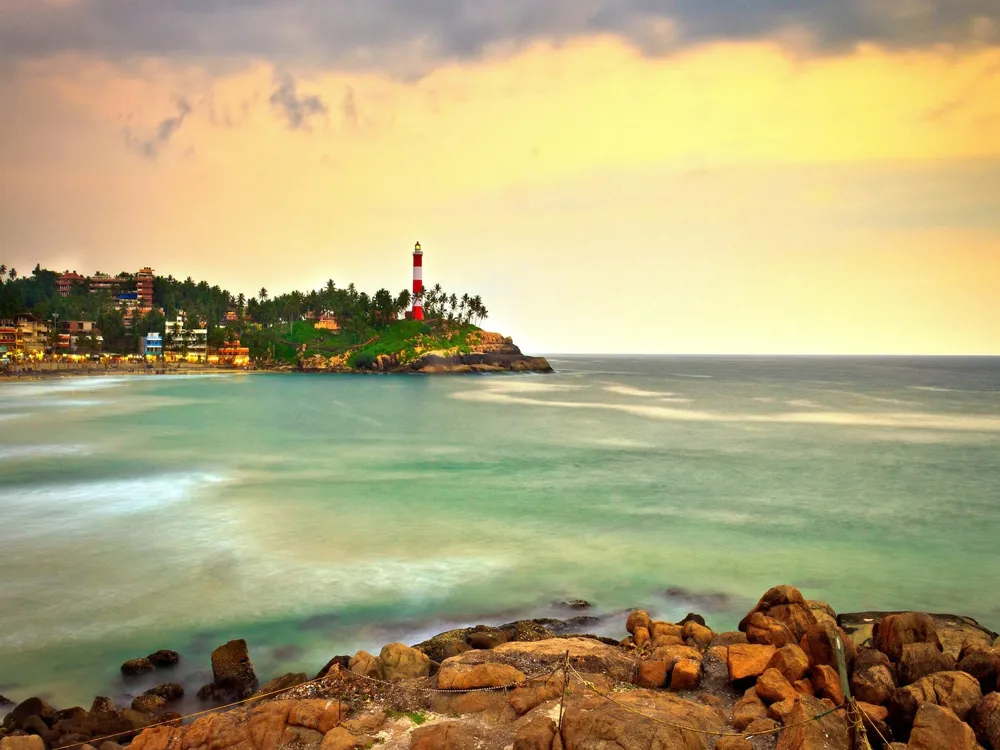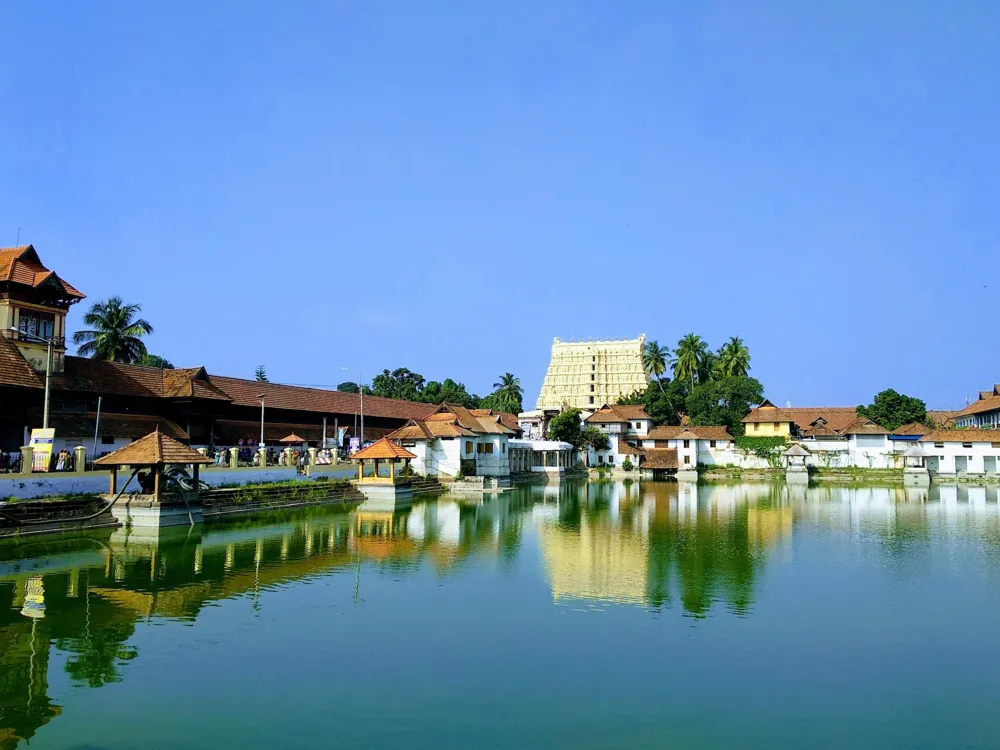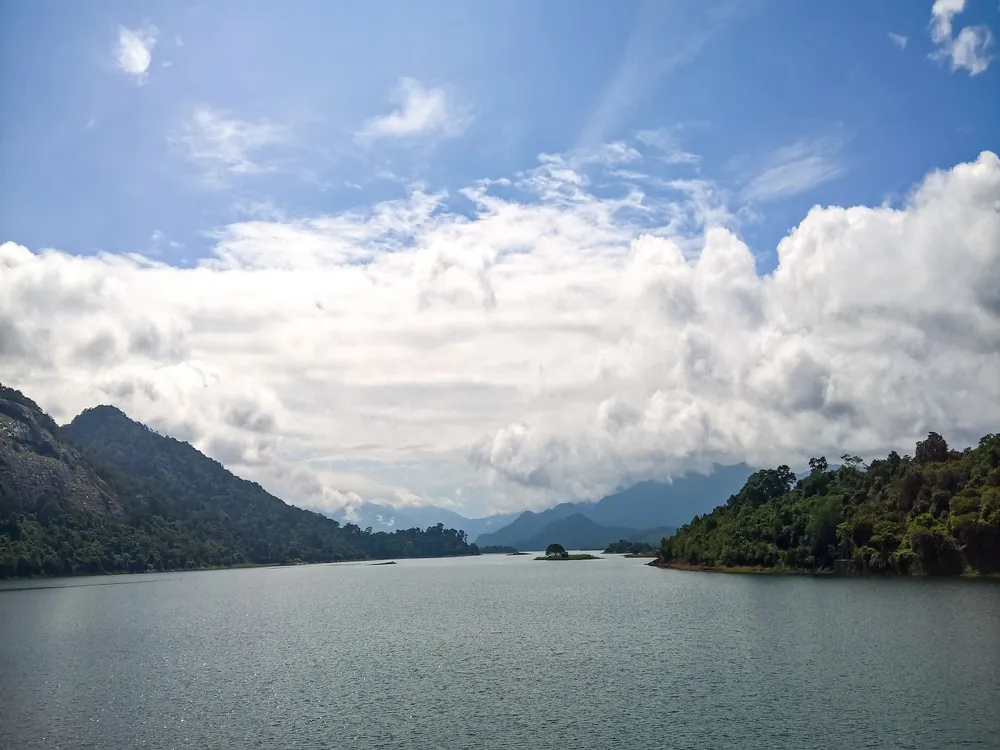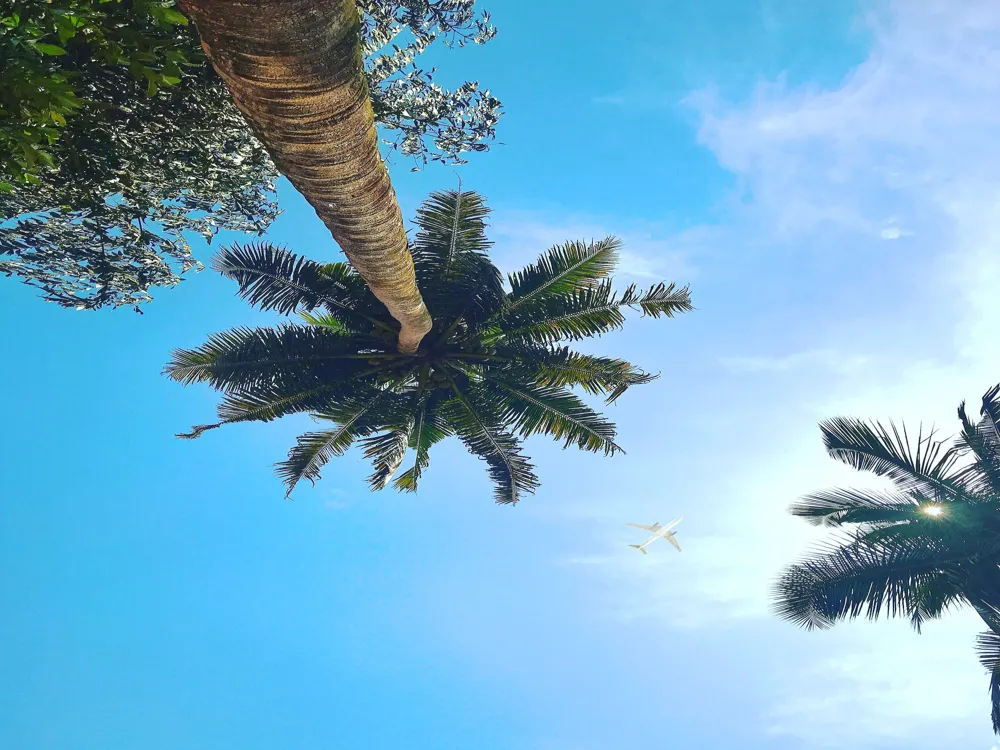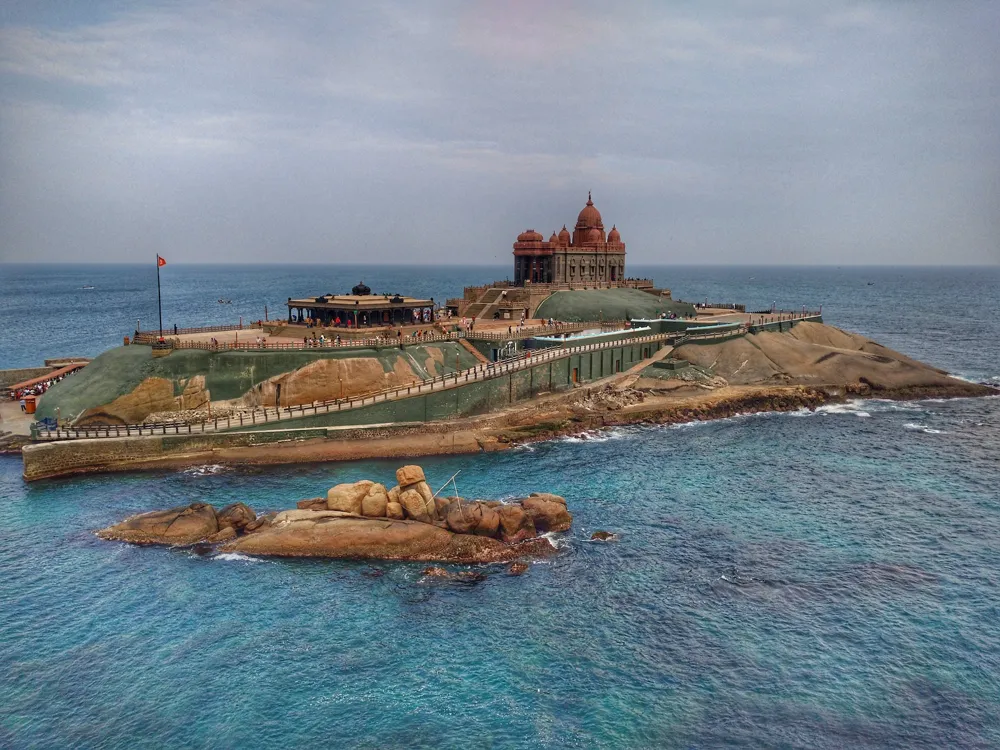Sasthamkotta Lake, nestled in the heart of Kollam, Kerala, is a pristine freshwater lake, revered as the largest of its kind in Kerala. This enchanting lake, spread over a vast area, is not just a natural wonder but also a vital source of drinking water for several nearby districts. Surrounded by hills on three sides and bordered by the ancient Sastha temple, the lake offers a serene and picturesque setting. The origin of Sasthamkotta Lake is steeped in geological and mythological history. Geologically, the lake is a result of the unique formation of earth's crust, while mythologically, it is believed to have been formed by the 'Varunastra' - a weapon of Lord Parashurama, an incarnation of Lord Vishnu. The lake's ecosystem is a thriving habitat for a variety of aquatic life and is an avian paradise, attracting numerous migratory birds. The water of Sasthamkotta Lake is known for its purity and medicinal properties, drawing researchers and health enthusiasts alike. The lake's catchment area is rich in biodiversity, hosting a variety of flora and fauna. The surrounding wetlands and forests add to the ecological significance of the lake, making it a site of great environmental and scientific interest. ... [Continue writing for at least 1500 words focusing on the geological, ecological, and cultural significance of Sasthamkotta Lake, its impact on local communities, conservation efforts, and its role in Kerala's ecosystem.] The architectural marvel of Sasthamkotta Lake is a blend of natural formation and human ingenuity. The lake, cradled in a basin formed by hills, has a unique geological structure. It is an endorheic lake (a closed drainage basin that retains water and allows no outflow) with a natural bund on one side, created by the sedimentation of the Kallada River. The design and structure of the lake have evolved over centuries, influenced by both nature and local inhabitants. Ancient tribes living in the area developed ingenious methods to utilize the lake's resources, which were later enhanced during the rule of local kingdoms. Traditional methods of water conservation and management, reflecting the architectural intelligence of the era, were employed to maintain the lake's ecosystem. One of the unique architectural features of the lake is the ancient temple of Lord Sastha, located on its banks. This temple, with its traditional Kerala-style architecture, adds a spiritual dimension to the lake. The temple's architecture, with its intricate wood carvings and mural paintings, reflects the artistic heritage of Kerala. ... [Continue writing for at least 1500 words focusing on the geological architecture, human influence, traditional water management practices, architectural details of the Sastha temple, and the integration of the lake with local culture and traditions.] The ideal time to visit Sasthamkotta Lake is between November and March. During these months, the weather is pleasant, and the lake is teeming with migratory birds, offering a splendid view for bird watchers and nature enthusiasts. Visitors can indulge in boating, bird watching, and nature walks. The lake’s serene environment makes it perfect for photography and picnicking. Additionally, exploring the nearby Sastha temple adds a spiritual dimension to the visit. Respecting local customs and traditions is important. Visitors should dress modestly, especially when visiting the Sastha temple. It's also advisable to seek permission before photographing local inhabitants. As an ecologically sensitive area, visitors are encouraged to follow eco-friendly practices. Avoid using plastic, do not litter, and maintain the cleanliness of the lake and its surroundings. There are several accommodation options ranging from budget to luxury near Sasthamkotta Lake. Local cuisine, especially fish delicacies, is a must-try for food enthusiasts. Sasthamkotta Lake is well-connected by road, rail, and air. The nearest airport is Trivandrum International Airport, about 90 km away. Kollam Junction is the nearest railway station, located 29 km from the lake. Regular bus services and taxis are available from Kollam to Sasthamkotta. For those driving, the lake is accessible via NH 66, which is well-connected to major cities in Kerala. Read More:Overview of Sasthamkotta Lake, Kollam, Kerala
Architecture of Sasthamkotta Lake
Tips When Visiting Sasthamkotta Lake
Best Time to Visit
Activities to Enjoy
Local Etiquette and Customs
Eco-Friendly Practices
Accommodation and Food
How To Reach Sasthamkotta Lake
Sasthamkotta Lake
Kollam
Kerala
₹ 20,300 onwards
View kollam Packages
Weather :
Tags : Lake
Time Required : 1 - 2 hrs
Planning a Trip? Ask Your Question
Kollam Travel Packages
View All Packages For Kollam
Top Hotel Collections for Kollam

Private Pool

Luxury Hotels

5-Star Hotels

Pet Friendly
Top Hotels Near Kollam
Other Top Ranking Places In Kollam
View All Places To Visit In kollam
View kollam Packages
Weather :
Tags : Lake
Time Required : 1 - 2 hrs
Planning a Trip? Ask Your Question
Kollam Travel Packages
View All Packages For Kollam
Top Hotel Collections for Kollam

Private Pool

Luxury Hotels

5-Star Hotels

Pet Friendly







